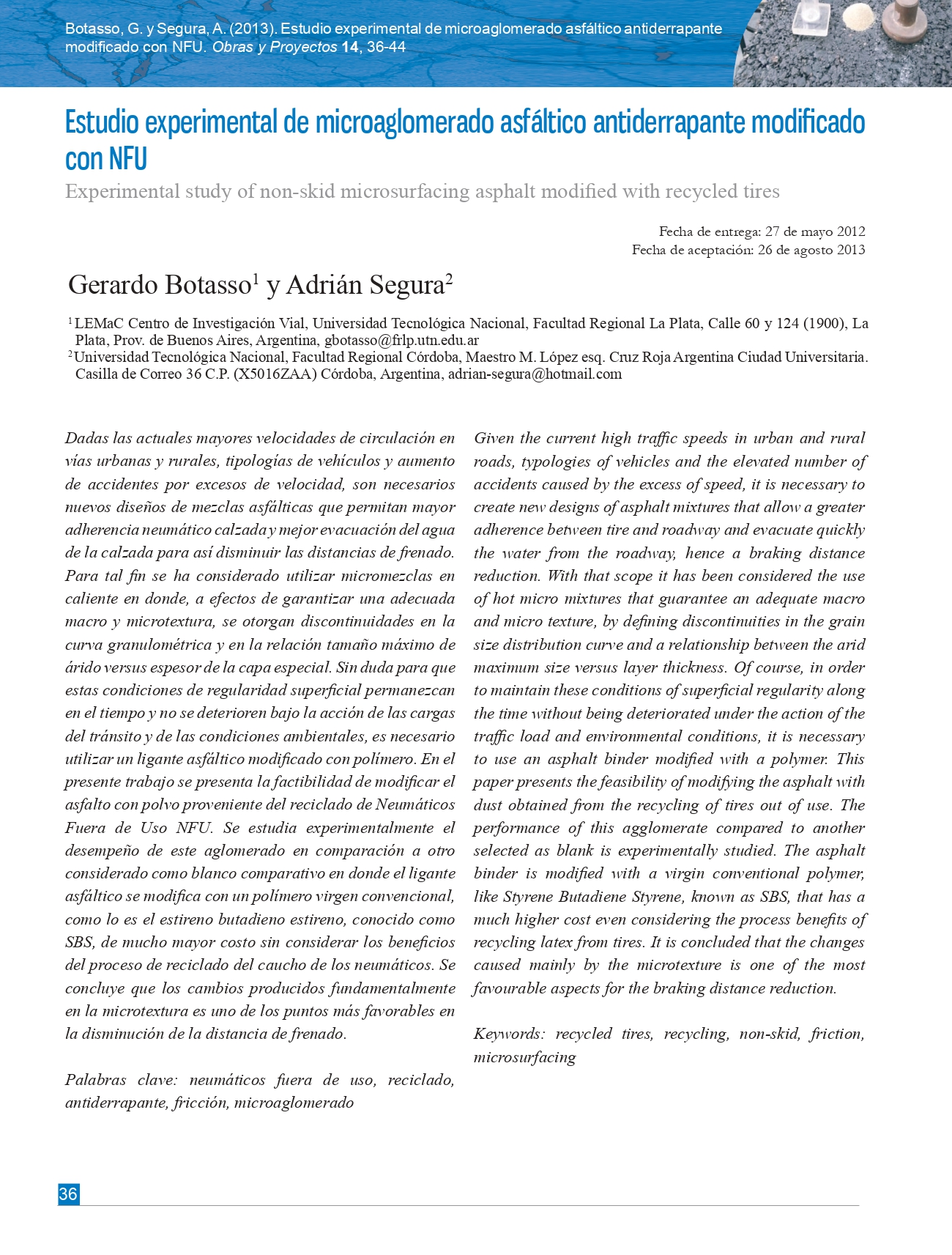Experimental study of non-skid microsurfacing asphalt modified with recycled tires
DOI:
https://doi.org/10.4067/S0718-28132013000200003Keywords:
recycled tires, recycling, non-skid, friction, microsurfacingAbstract
Given the current high traffic speeds in urban and rural roads, typologies of vehicles and the elevated number of accidents caused by the excess of speed, it is necessary to create new designs of asphalt mixtures that allow a greater adherence between tire and roadway and evacuate quickly the water from the roadway, hence a braking distance reduction. With that scope it has been considered the use of hot micro mixtures that guarantee an adequate macro and micro texture, by defining discontinuities in the grain size distribution curve and a relationship between the arid maximum size versus layer thickness. Of course, in order to maintain these conditions of superficial regularity along the time without being deteriorated under the action of the traffic load and environmental conditions, it is necessary to use an asphalt binder modified with a polymer. This paper presents the feasibility of modifying the asphalt with dust obtained from the recycling of tires out of use. The performance of this agglomerate compared to another selected as blank is experimentally studied. The asphalt binder is modified with a virgin conventional polymer, like Styrene Butadiene Styrene, known as SBS, that has a much higher cost even considering the process benefits of recycling latex from tires. It is concluded that the changes caused mainly by the microtexture is one of the most favourable aspects for the braking distance reduction.
References
Botasso G., González, R. y Rivera J. (2002). Nuevas Mezclas Asfálticas. LEMaC Centro Investigaciones Viales UTN Reg. La Plata, Argentina
BS EN 12697-22 (2003). Bituminous mixtures. Test methods for hot mix asphalt. Wheel tracking. British Standard Institution, London
CPAA Comisión Permanente del Asfalto de Argentina (2006). Especificaciones Técnicas de mezclas asfálticas en caliente de bajo espesor. Versión 01. Buenos Aires, Argentina
Dixon, J.C. (1991). Tyres, suspension and handling. Cambridge University Press
Gillespie, T.D. (1992). Fundamentáis of Vehicle Dynamics. SAE Inc.
IRAM 1555 (2010). Agregados. Determinación del coeficiente de resistencia al deslizamiento con el péndulo TRRL. Instituto de Normalización Argentino. Buenos Aires, Argentina
IRAM 6596 (2010). Asfaltos modificados con polímeros para uso vial. Clasificación y requisitos. Instituto de Normalización Argentino. Buenos Aires, Argentina
IRAM 1850 (2010). Agregados. Método de determinación de la profundidad de la macrotextura superficial de un pavimento mediante el círculo de arena. Instituto de Normalización Argentino. Buenos Aires, Argentina
NLT 175 (2005). Coeficiente de resistencia al deslizamiento (CRD) con el péndulo del TRRL. Normas del Ministerio de Fomento de España.
Pacejka, H. B. (2002). Tyre and Vehicle Dynamics. Butterworth Heinemann

Downloads
Published
Issue
Section
License
Copyright (c) 2013 Universidad Católica de la Santísima Concepción

This work is licensed under a Creative Commons Attribution-NonCommercial 4.0 International License.







